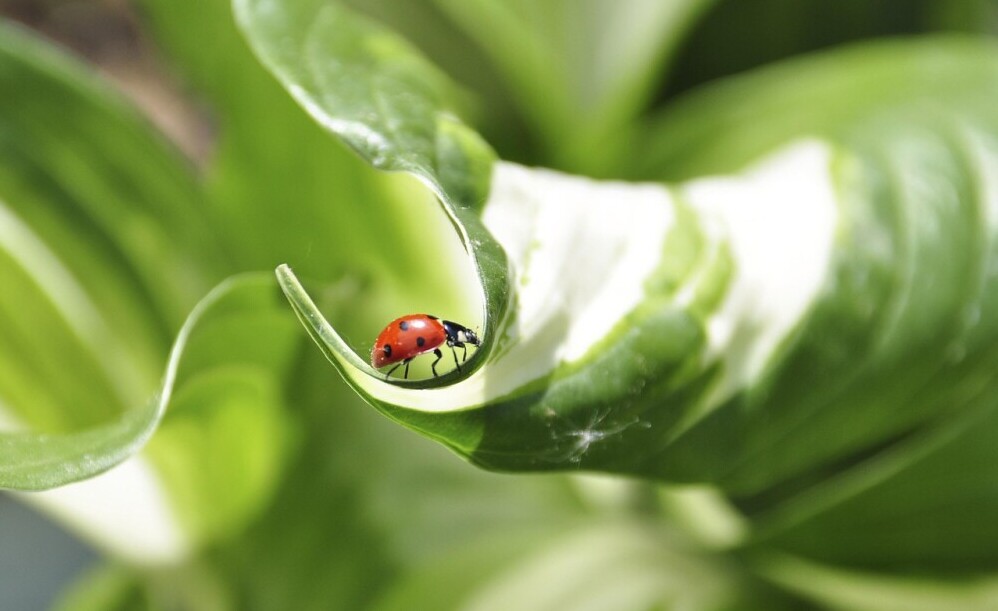Vegetable gardeners often look for methods that protect their plants without resorting to harsh chemicals. Natural pest control is a way to maintain a healthy garden by encouraging beneficial organisms and using physical barriers that keep pests at bay. In this article, I share practical ways to achieve this balance by relying on nature’s own solutions while adding some simple, protective tools to your setup.

Essential Strategies for Natural Pest Control
When it comes to safeguarding your vegetable garden without synthetic chemicals, a combination of practical techniques works best. Integrated pest management means using prevention, physical barriers, and beneficial organisms to keep harmful critters away. Instead of trying to kill every bug, the focus is on maintaining a healthy garden environment where natural predators keep pest populations under control.
A well-managed garden uses methods like crop rotation, intercropping, and habitat boosts that attract beneficial insects. This approach not only reduces pest damage but also promotes soil health. Starting with natural pest control means thinking holistically and embracing the idea that nature often provides its own checks and balances.
Getting Started With Natural Pest Control
Beginning your adventure with natural pest control starts by examining your garden layout and identifying common entry points for pests. One practical step is to use a 1/4 inch hardware cloth along the bottom of your gardens and raised gardens. This simple barrier helps protect against ground-dwelling intruders like gophers, which can be especially damaging when they tunnel under your plants. Another preventive task is to check the perimeter of your fence and block off any animal-made entry points by using hardware cloth, or big rocks and bricks to close it off. Keep it clear along the fencing so critters can not hide, including under overgrown plants.
Practical Methods and Tools
An effective natural pest control strategy relies on a variety of methods that work together. Here are some of the practical tools and techniques I recommend:
- Hardware Cloth for Ground Protection: Placing a 1/4 inch hardware cloth at the bottom of your garden beds stops small burrowing pests from damaging the roots of your plants.
- Netting for Overhead Defense: Lightweight netting can keep birds and grasshoppers away. This is particularly useful for protecting ripening fruit or tender leaves.
- Metal Mesh Baskets: Using metal mesh baskets to cover individual plants can protect against mammals like raccoons, possums, squirrels, and rats. These baskets let in sunlight and water while keeping larger critters at bay. Make sure to stake the cages down and to sink them into the dirt a couple inches so deter the critters from digging under the cage.
- Worm Tea Sprays: A homemade spray known as worm tea is beneficial for plants, strengthening their immunity. It encourages a healthy balance of microorganisms and helps fend off destructive insects such as aphids. Helpful fact: Bad bugs eat the bad bacteria on the plant, and good bugs are attracted to the good bacteria, and eat the bad bugs eating the bad bacteria. So when you see an infestation on your plant, you know that plant’s biology of bacteria is out of balance and needs to be sprayed with worm tea.
These tools serve as a good starting point for anyone looking to minimize chemical use in their vegetable garden. Combining mechanical barriers with the encouragement of natural predators sets the stage for a thriving, pest-resistant garden ecosystem.
Advanced Tips and Tricks for a Healthier Vegetable Garden
Once you have established basic natural pest control measures, there are some advanced techniques to further boost your garden’s resilience. These tips are especially useful for gardeners who have already adopted an integrated approach and are looking to fine-tune their methods.
Encourage Beneficial Insects: Nurturing a habitat for beneficial insects is a step further in minimizing chemical input. Plant flowers and herbs that attract predators such as ladybugs, lacewings, and the praying mantis. These insects naturally hunt down the pests that damage your crops.
Companion Planting: Companion planting is a well-known tactic in natural pest control. For instance, planting marigolds alongside cabbage can help repel cabbage moths, while basil near tomatoes may improve flavor and deter pests. The diversity in your garden creates a more balanced ecosystem that is less appealing to unwanted visitors.
Crop Rotation and plants: Rotating your crops each season prevents the accumulation of pest populations that target particular plants. Consider planting crops that critters do not typically like or can’t reach. For starters, root vegetables, some squash varieties like butter nut, and the spicy type. I noticed the leafy greens stand a good chance as well.
Soil Health: Soil enriched with compost, worm castings and other organic matter supports robust plant growth, making your crops less vulnerable to infestations, and promotes a balanced plant immune system fending off pests with its healthy immunity.
Hand-Picking and Monitoring: Even with all preventive measures in place, regular monitoring is essential. Hand-picking insects like tomato hornworms and aphids ensures that their populations remain under control and you get ahead of any potential problems. This traditional method works especially well in small-scale gardens and gives you direct feedback about the health of your ecosystem. Checking for nibbled leaves, digging and mounds under cages and raised gardens will keep your critter proofing effective.
Smells: A solution like peppermint, garlic or neem spray will help keep away critters who are attracted by the smell. Spray on the plants regularly, after rain, and after watering. Warning, this next part is gross. Consider using “predator pea” like coyote pea, or cat urine from the litter box. Gross! but it is something to consider. My grandma would do this to keep the rats away and it worked for her.
Make it uncomfortable: Be creative and careful. for example, if you have branches with sharp spikes like a pomegranate tree, lay the branches across the garden and deter the larger critters. Pro tip: I collect the spiky branches in the fall after pruning. If you don’t have a pomegranate tree, you can use wooden skewers to put in the dirt all around your plants, it’s like leaving Legos out and stepping on them. For small critters like snails and slugs, sprinkle roughly crushed egg shells around your plants, and an added benefit of adding calcium to the soil. Snails do not like to cross over sharp edges like eggshells, you can put barriers around the plants, use bottles with each end cut off, leaving you with a ring and a sharp edge. Be creative but be safe.
These advanced strategies not only keep pests in check but also help in maintaining the overall health and productivity of your garden. By encouraging natural predators and sustaining a balanced ecosystem, you’re less likely to experience severe pest outbreaks.
Frequently Asked Questions
This section covers common questions gardeners have about applying natural pest control methods in their vegetable gardens.
Question: How effective is natural pest control compared to chemical methods?
Answer: While chemical pesticides often provide quick results, natural pest control takes a longer-term approach. It builds a balanced ecosystem where beneficial insects and physical barriers work continuously. Over time, this method can result in healthier plants and a more sustainable garden.
Question: What are some easily sourced natural sprays for pest control?
Answer: Homemade sprays like worm tea are popular among gardeners. A diluted mixture helps promote beneficial microorganisms and can deter pests such as aphids without harming your plants. Garlic and neem oil mixtures are other natural options to consider.
Question: Are physical barriers like hardware cloth and netting enough to protect my garden?
Answer: Physical barriers are a very important part of a broader pest management strategy. While they can significantly reduce damage by blocking access, combining these tools with other methods like companion planting and the encouragement of beneficial insects produces the best results.
Question: How do I know if natural pest control is working in my garden?
Answer: Regular garden inspections help you monitor pest populations. Healthy, thriving plants with minimal damage generally indicate that your natural control methods are successful. Over time, underground barriers will show fewer signs of burrowing pests, and beneficial insects will be a common sight throughout your garden.
Extra Insights on Sustainable Gardening Practices
To further build on natural pest control, many gardeners are finding that adding a few extra eco-friendly techniques can take it up a notch. For example, incorporating organic mulches not only conserves moisture but also supports soil organisms that help break down organic matter and improve nutrient uptake. This extra step often results in plants that are more vigorous and better equipped to resist pest damage.
Another useful tip is to create water stations or small ponds that attract beneficial amphibians such as frogs. These natural helpers often feed on insects and other small pests, thereby contributing to a balanced ecosystem. In addition, establishing a small compost area right within your garden can yield rich, nutrient-dense organic matter that further builds up soil health over time.
Gardeners are also encouraged to consider intercropping strategies that mix vegetables with flowers and herbs. This mix not only brings an eye-catching diversity to your garden but also confuses pests that prefer a single type of plant. By rotating crops seasonally and avoiding planting the same family of vegetables in one spot, you can effectively reduce the buildup of species-specific pests.
Furthermore, spending a little extra time each week to closely check your garden can prove invaluable. By manually removing any detected pests and adjusting your strategy as needed, you gradually tailor your management plan to the unique needs of your garden. This hands-on approach not only strengthens your connection with your plants but also reinforces a more natural rhythm that many chemical interventions simply cannot match.
Conclusion
Investing time in understanding your garden’s unique ecosystem goes a long way. As you become more experienced, you’ll find that adapting these methods to your specific conditions is easier. Natural pest control is more than a method. It is a philosophy that respects natural balance and relies on simple, effective tools and organic practices to keep your garden healthy and fruitful.
Implementing these extra sustainable practices transforms your gardening routine into an all-in-one strategy that is both enjoyable and effective. Over time, your garden will become a living demonstration of how a balanced ecosystem can be maintained without harsh chemicals, resulting in produce that tastes as good as it looks.

Excellent article. I have heard of a few of these methods before but never read the details needed to implement them or understood the extent of how they worked.
So many options and variations here. It makes it look easy to utilize at least a few with very little effort to sustain and allow my garden to flourish. Thank you.
Thank you Christopher. The worst day in the garden is when you see your garden after working so hard to have a critter show up and eat all the plants and veggies in one night.